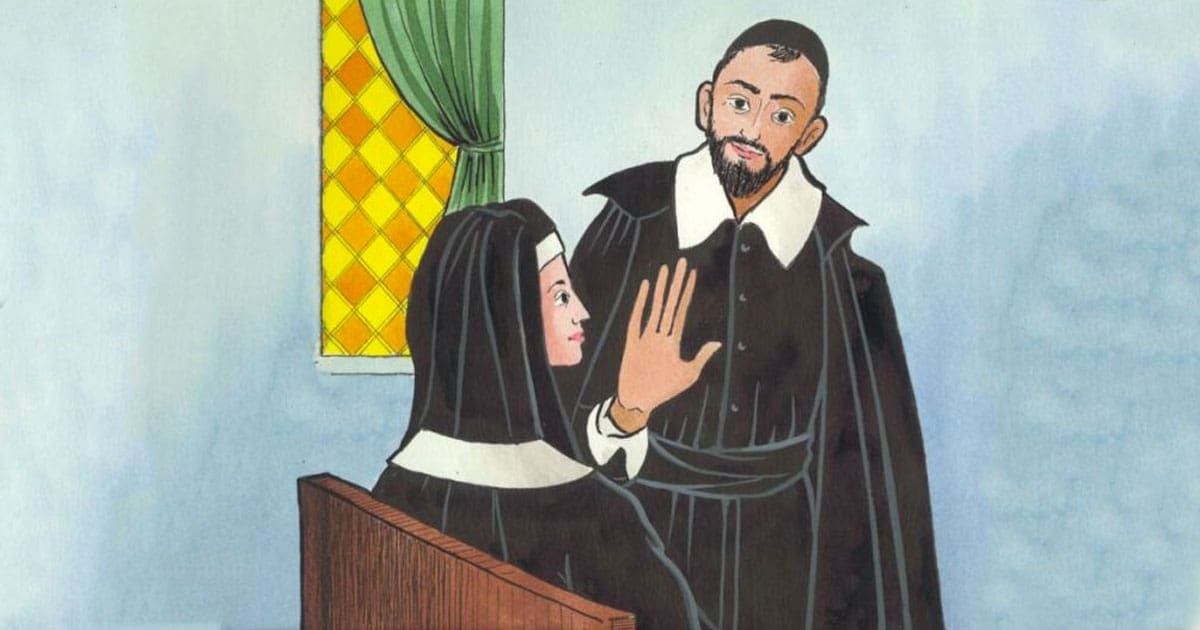“Why Can’t a Woman Be More Like a Man?”
Why can’t a woman be more like a man?
“Why can’t a woman be more like a man?” asked Professor Henry Higgins in the classic Hollywood movie “My Fair Lady.” But women might ask: “Why can’t a man be more like a woman?” These questions have been asked for centuries … sometimes in simple one-word exasperated exclamations – Women! or Men!
I must admit I can’t find any quote of St. Vincent where he asks that question. But I suspect he would have understood the question. Just as his co-foundress St.Louise would have understood the feminine variation of the question.
For 35 years, they journeyed together, learning to know, esteem and respect each other as they collaborated intensely establishing missions all over France and beyond. But let’s not be fooled. They experienced some disagreements, tensions and conflicts which challenged their relationship.
We are blessed to know the outcomes of the intersection of these two lives. In their final chapters, they were true collaborators and equals. However, in the early chapters, any collaboration between these two, so very different in backgrounds, experiences, personalities, and ways of operating, seemed doomed only to end in disaster.
Tensions between Vincent and Louise
They apparently had a strong difference of opinion over finding a new motherhouse because of the increase in numbers of country girls coming to join the community. Louise wanted to be close to St. Lazare and Vincent wasn’t particularly keen on that idea. The letters go back and forth for twelve months between September 1640 and September 1641. We get a glimpse of the tension between them, when Vincent says to Louise:
We must keep on praying for the house; I am not so worried about it as about the way to set you up right now in a rented lodging. O Jesus! Mademoiselle, your concerns do not depend on a house, but on the continuation of God’s blessing on the work.
Eventually, a house came up for sale close to St. Lazare and Vincent bought it. On September 6 or 7th, 1641, he wrote to Louise:
We finally have the contract of purchase (for the house) and the money has been paid. Please let me know how many rooms there are. We shall announce the purchase tomorrow in the homily.
One can wonder about the feelings behind the many letters they exchanged.
[For details and other examples of the above, visit the reflection of Sr. Maggie Reynolds, D.C. “Collaboration between two exceptional people”]
Yet, their journey together changed themselves, France, the Church and Religious life.
What can we learn from Vincent and Louise
We see their dedication to the same goal, the service of Christ in the poor that attracted them to one another, as both gave their lives to following the promptings of God. They learned from each other. They became true collaborators and equals.
Vincent and Louise are proof that whatever our background, whatever our personality, whatever our life experiences, whatever trials we have, and whatever conflicts and tensions we experience, these are not impediments to doing good and achieving goals. Vincent and Louise stand out for us as models of true collaborators in ministry, indeed for those in every walk of life.
Just as Vincent and Louise learned to collaborate as equals, so too Vincentian Family branches can learn the deeper meaning of the AIC/LCUSA motto “Together against all forms of poverty” … and change the face of our world.
Some things to think about
- When and how have I collaborated with someone very different from myself to get something important done?
- Do people think of me as a collaborative person?
- What have I learned about myself from my efforts to collaborate with someone, especially a person in need?









Thank you!